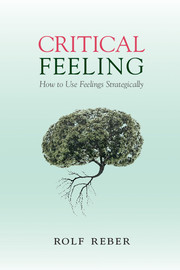Introduction
from Part I - The basics of critical feeling
Published online by Cambridge University Press: 05 March 2016
Summary
Ever since Plato introduced his allegory of the charioteer, where one horse is passion, the other is motivation, and the charioteer is reason, thinkers have captured conduct of life as a conflict between passion and reason. Theorists distinguished between human nature, which acts on impulses, and acts derived from reason-based morality (see Dewey 2012/1922). Humans often act on impulses that do not comply with what they themselves think would be best. Some eat too much, drink too much, or have romantic adventures they later regret. People who forget about the consequences of their actions and act based on their feelings may experience unsatisfactory results. For example, couples divorce due to a shattered relationship despite the shattered finances that follow suit. On the other hand, decision makers sometimes know that a course of action may have disastrous consequences if they follow their gut feeling. That is why employees do not walk away from their job when they are angry at their boss. Sometimes, however, it is good to act on gut feelings. For example, job applicants feel negatively about an option they think would be best. That is why people may reject a job offer that would yield a higher income and better career prospects; they feel uncomfortable at the job interview, a sign that the job has some drawbacks. Finally, although attitudes have been defined as consisting of cognitive, affective, and behavioral components (Krech, Crutchfield, and Ballachey 1962; Rosenberg and Hovland 1960), there is ample evidence for a lack of correspondence among these components of attitudes (Wicker 1969; Zanna and Rempel 1988). For example, people think of themselves as environmentalists but drive cars, produce unnecessary garbage or fly to distant conference destinations to give speeches about how to curb climate change.
This lack of agreement between thought and feeling that precede action raises several questions. How can we keep our impulses in check? When can we trust our gut feelings, and when not? How can we align feeling with thought and vice versa? Finally, how could we learn to use our feelings in order to act according to our values and the values of our community? These are the questions I address in this book.
- Type
- Chapter
- Information
- Critical FeelingHow to Use Feelings Strategically, pp. 3 - 8Publisher: Cambridge University PressPrint publication year: 2016

